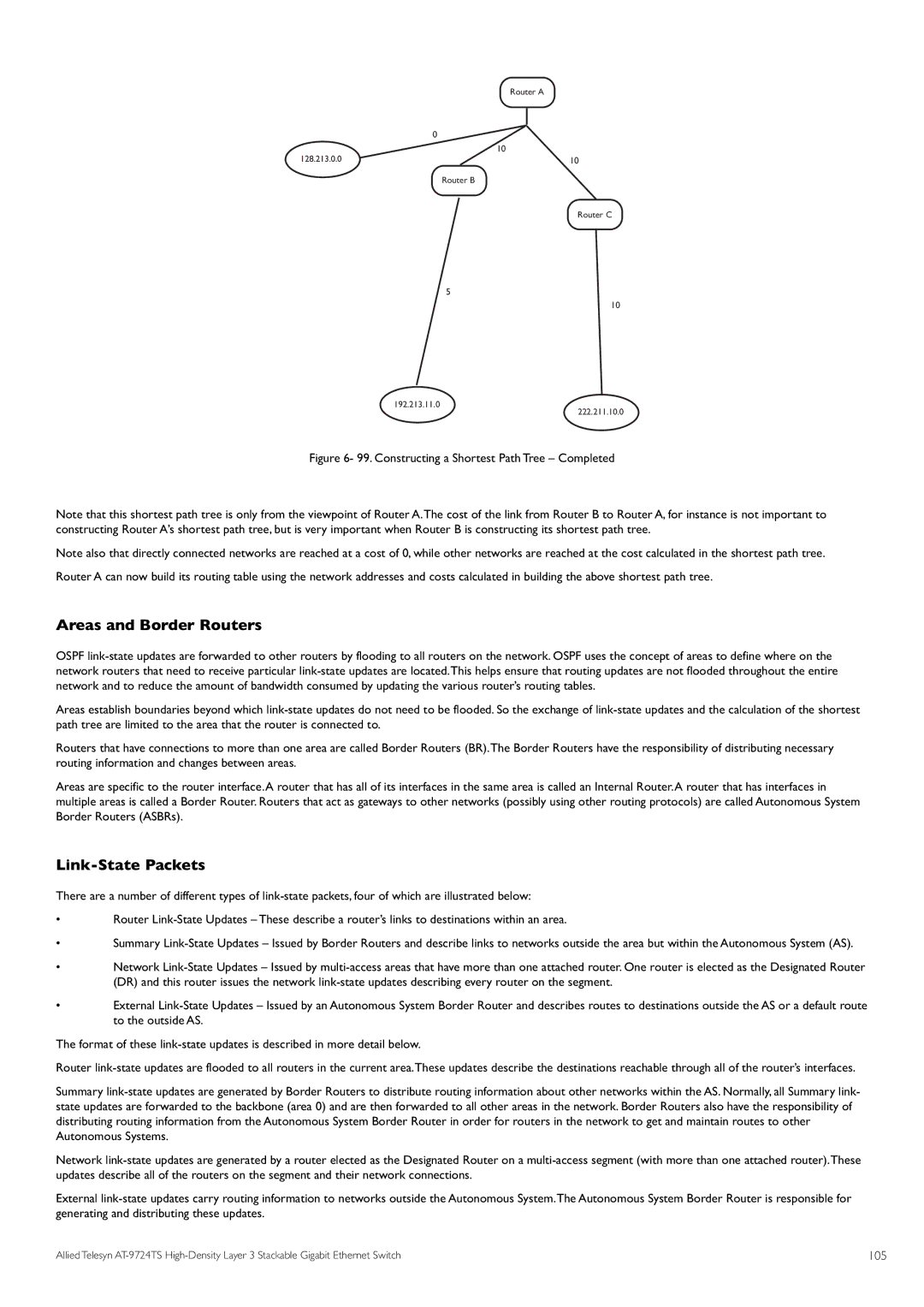
| Router A |
| 0 |
128.213.0.0 | 10 |
10 |
Router B
Router C
5
192.213.11.0
10
222.211.10.0
Figure 6- 99. Constructing a Shortest Path Tree – Completed
Note that this shortest path tree is only from the viewpoint of Router A.The cost of the link from Router B to Router A, for instance is not important to constructing Router A’s shortest path tree, but is very important when Router B is constructing its shortest path tree.
Note also that directly connected networks are reached at a cost of 0, while other networks are reached at the cost calculated in the shortest path tree. Router A can now build its routing table using the network addresses and costs calculated in building the above shortest path tree.
Areas and Border Routers
OSPF
Areas establish boundaries beyond which
Routers that have connections to more than one area are called Border Routers (BR).The Border Routers have the responsibility of distributing necessary routing information and changes between areas.
Areas are specific to the router interface.A router that has all of its interfaces in the same area is called an Internal Router.A router that has interfaces in multiple areas is called a Border Router. Routers that act as gateways to other networks (possibly using other routing protocols) are called Autonomous System Border Routers (ASBRs).
Link-State Packets
There are a number of different types of
•Router
•Summary
•Network
•External
The format of these
Router
Network
External
Allied Telesyn | 105 |
